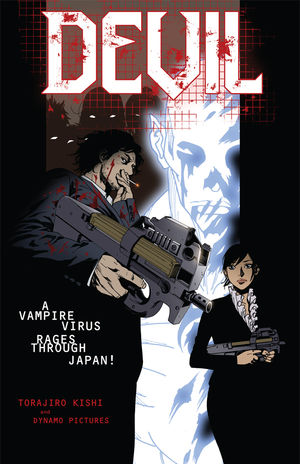Today I look at Mike Dawson's "Troop 142"
Comics, for the most part, are a fairly escapist medium. We buy them to see caped gods fly about and right injustices. We buy them to see these heroes tackle problems that are so larger than life, you sometimes can't help but feel rather disconnected from the whole affair.
But then you find comics and graphic novels that don't paint a fantasy world of impossibility. Stories that hold a mirror up to the reader, and instead of giving them an outlet of escape, asks them to look within at our own humanity and weakness. Mike Dawson's "Troop 142" is one such comic.
"Troop 142" follows one week in the lives of a Boy Scout Troop at the Pinewood Forest Summer Camp. We get to take part in the whole camp experience; The canvas tents, swimming in a cold lake, merit badge classes, and god awful scent of the outhouses. But don't be fooled into thinking that this comic is simply a camping brochure, sharing the wonders of the great outdoors. Because Dawson's real focus in this adventure, is the boys and Scoutmasters of the Troop.
Dawson captures all the awkwardness and frustration of youth in his characters. Any man young or old will most likely remember the lashing out at authority figures, the many rites of passage, the pranks and jokes at other's expense, and the locker room language. Not only with the excellent dialogue and situations he places them in, but their awkward proportions and postures clearly express that time of adolescent change.
This is probably the most difficult review I've had to write to date, largely because I myself was a Boy Scout. Someone who wasn't a part of that organization might read this book and be able to see it as just another story, just another "coming of age" comic. But myself, I read "Troop 142", and I see myself on every page. Because of that, it's hard for me to treat this like any other comic. I could FEEL all the frustration and awkwardness at the changes going on in myself and those around me while reading this book. But "Troop 142" also brought back the fond feelings of bonding and brotherhood that I found in my own Troop.
Dawson brings up a number of issues concerning Scouting that are quite prevalent in the world today; Allowing gays into the organization, and the importance of religion in the very foundation of Scouting are two of the big ones. Dawson does an excellent job of bringing these topics to the reader, but allowing them to form their own opinions on the matter. These are also things that only the adults and Scoutmasters talk about, effectively showing that these are clearly not the issues for Scouts busy with exploring their own youth.
The art in "Troop 142" is one of those excellent instances where the visual representation matches the story being told perfectly. I've already mentioned the excellent way that Dawson has portrayed the adolescent awkwardness of the young Scouts. Dawson's inks have a way of moving between the smooth, rather out of place bodies of the Scouts, to the gritty yet harmonious environment of the forest around them. This, along with the excellent use of lights and darks around the campfire really sells the summer camp setting.
Overall, Mike Dawson's "Troop 142" is an absolute must have on your shelf full of comic books. While it certainly has the ability to make us relive some our more unwanted memories of youth, it also fills us with a warm nostalgia over the friendships we had back then. And whether you were a Boy Scout (or still are, as many say) or not, "Troop 142" will still make you have a good ponder about morality, religion, cleanliness, and all the other points of the Scout Law. "Be prepared" is the Scout Motto. So be prepared to enjoy "Troop 142".
"Troop 142" can be read at http://troop142.mikedawsoncomics.com/index.html/ . More of Mike Dawson's work can be found at http://www.mikedawsoncomics.com/ , as well as contact info.



